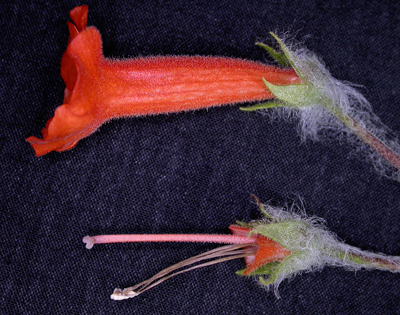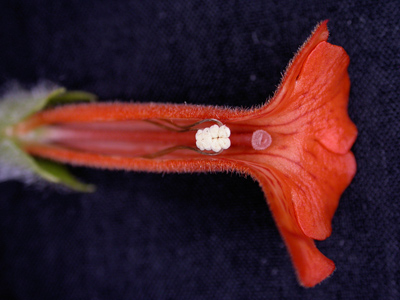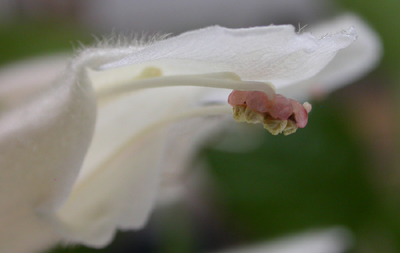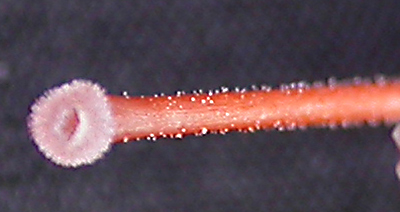
On top is a flower of Sinningia bullata as it appears to the observer.
Below is the flower with the corolla removed, to show the reproductive parts of the flower. The mostly straight structure is the style; it ends in a sticky blob called the stigma. The multiple slightly curved structures below the style are the stamens, each made up of a slender stalk called a filament and ending in a pollen-bearing clump called an anther.


